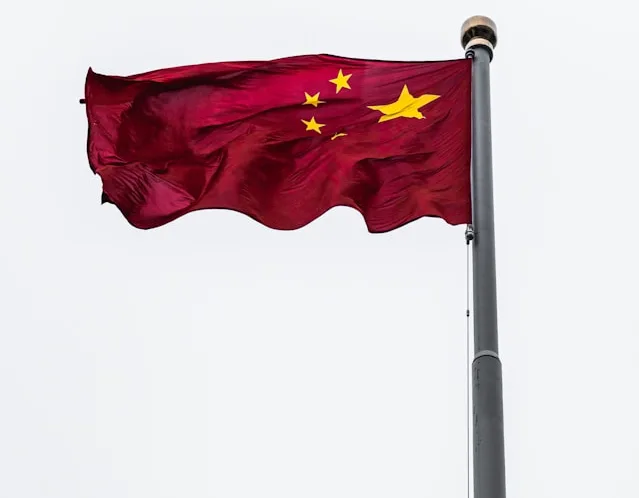The People’s Bank of China lowers the 14-day reverse repurchase rate as part of a strategy to stimulate growth and enhance liquidity in the banking system
On September 23, 2024, the People’s Bank of China (PBOC) announced a reduction in the 14-day reverse repurchase rate from 1.95% to 1.85%, a move that highlights the central bank’s efforts to combat a worsening economic slowdown. Alongside this rate cut, the PBOC injected 74.5 billion yuan (approximately $10.6 billion) into the banking system, aiming to bolster liquidity and stimulate growth.
This decision aligns with previous cuts, including a 10-basis-point reduction in the seven-day reverse repo rate earlier in July, signalling a coordinated effort to provide financial support to the economy. Frances Cheung, head of foreign exchange and rates strategy at Oversea-Chinese Banking Corp, noted that this latest cut reflects a necessary adjustment to maintain pace with earlier monetary policy changes.
In a timely move, the PBOC scheduled a press briefing for September 24 featuring central bank governor Pan Gongsheng and two other financial regulators. This briefing is expected to shed light on the government’s economic strategies and further efforts to invigorate growth. Speculation is growing that authorities are preparing to unveil a more aggressive stimulus package, especially in light of disappointing economic data from August, which raised concerns about meeting the annual growth target of approximately 5%.
Embed from Getty ImagesMarket reactions have already begun to reflect these expectations. The yield on China’s 10-year government bonds fell to a record low of 2.03%, indicating that traders are anticipating additional monetary stimulus. Additionally, the PBOC adjusted its daily reference rate for the yuan to 7.0531 per dollar, approaching the critical 7 level, a move that suggests a potential shift in currency policy as well.
Economists are predicting that the PBOC will soon cut the seven-day repo rate and the reserve requirement ratio. Zhiwei Zhang, president and chief economist at Pinpoint Asset Management, emphasized the likelihood of further easing measures following the upcoming press conference.
Moreover, the PBOC has another opportunity to reduce its one-year policy loan rates on September 25. The recent cuts are particularly strategic, occurring just ahead of the National Day Holiday, which starts on October 1, during which the central bank typically increases liquidity to support consumer spending.
Despite these measures, some analysts caution that the recent 10-basis-point cut alone may not suffice to reverse the declining economic momentum. ANZ’s Chief Greater China Economist, Raymond Yeung, highlighted the need for a more comprehensive approach that includes not just rate cuts but also adjustments to mortgage rates and reserve requirements.
As China navigates this period of economic uncertainty, the coming days will be crucial for assessing the effectiveness of the PBOC’s strategies in revitalizing the nation’s economy.
Analysis
Political Perspective
The recent rate cut by the PBOC underscores the government’s recognition of the need for intervention in the face of economic challenges. With the ruling party’s credibility at stake, a failure to meet growth targets could prompt public dissatisfaction. Therefore, the central bank’s measures serve both to stabilize the economy and to reinforce the government’s commitment to economic management, positioning it favourably ahead of any upcoming political events or public scrutiny.
Social Perspective
The economic slowdown in China impacts millions, with rising unemployment and faltering consumer confidence. Rate cuts and liquidity injections are crucial in providing immediate relief to businesses and households struggling with economic pressures. The public’s perception of the government’s effectiveness in handling these issues will be critical in shaping future social policies and maintaining social stability.
Racial Perspective
China’s diverse population faces varying economic realities, and government policies must consider these disparities. Ethnic minorities in regions such as Xinjiang and Tibet may experience economic challenges differently than urban populations. Policymakers need to ensure that stimulus measures are inclusive and effectively reach all demographics, addressing the unique needs of various communities.
Gender Perspective
Women in China, particularly those in urban areas, are disproportionately affected by economic downturns due to job losses and lower wages. Policies aimed at stimulating growth should incorporate gender considerations, ensuring that women have equal access to job opportunities and financial support. Addressing gender disparities in the economic recovery will be vital for achieving sustainable growth.
Economic Perspective
The PBOC’s actions reflect an urgent response to economic data that suggests a contraction in key sectors. By cutting rates and injecting liquidity, the central bank aims to stimulate borrowing and spending. However, experts argue that a more extensive package of measures is needed to address the underlying structural issues in the economy, such as excessive debt and overcapacity in certain industries. Sustainable economic growth will require a multifaceted approach, including reforms that enhance productivity and innovation.
In conclusion, the PBOC’s recent rate cut is a critical component of China’s strategy to address its economic challenges. As the government prepares for the upcoming press conference, market participants and citizens alike will be keenly observing the measures that will follow. The effectiveness of these policies in achieving stable growth will ultimately determine the country’s economic trajectory in the coming months.
